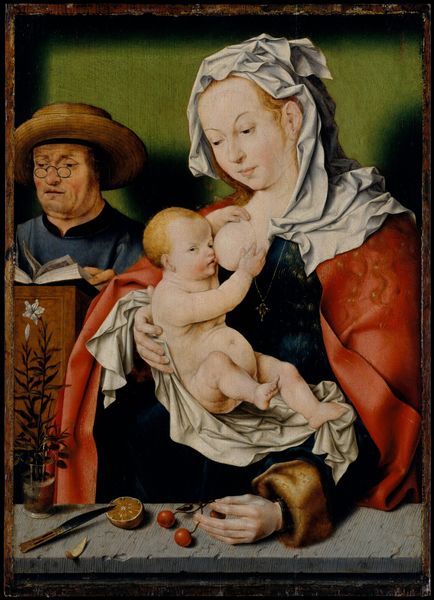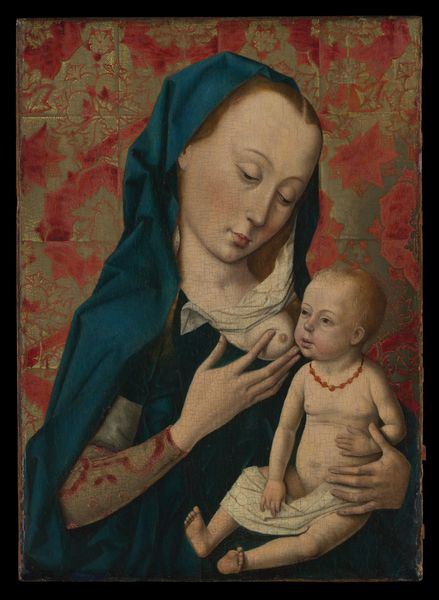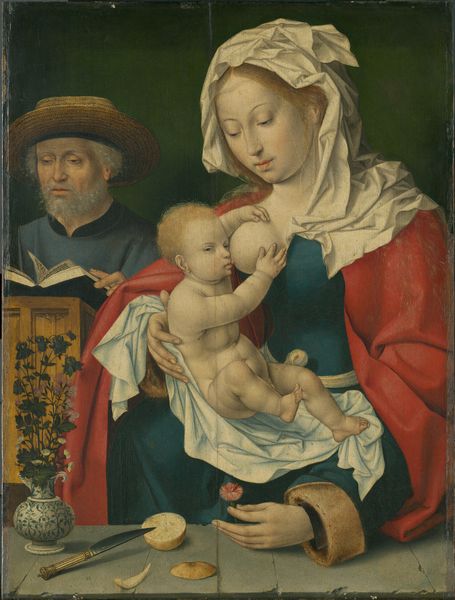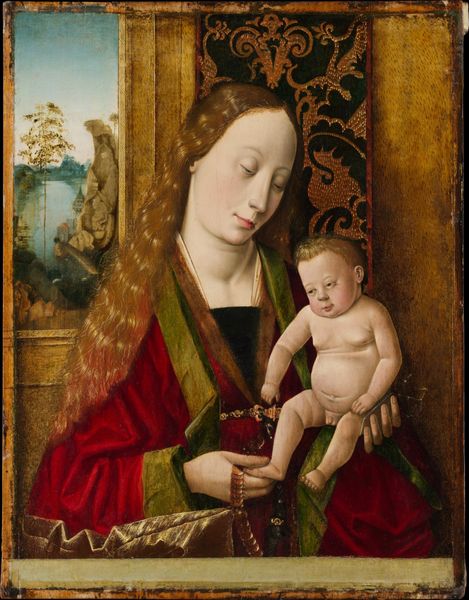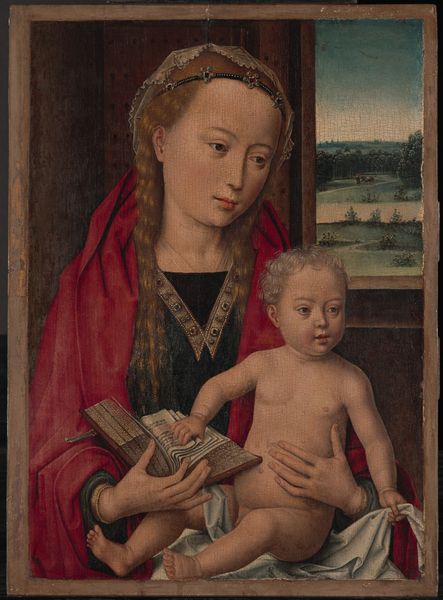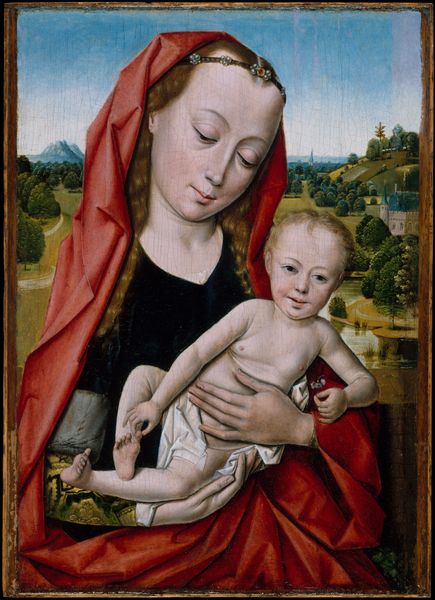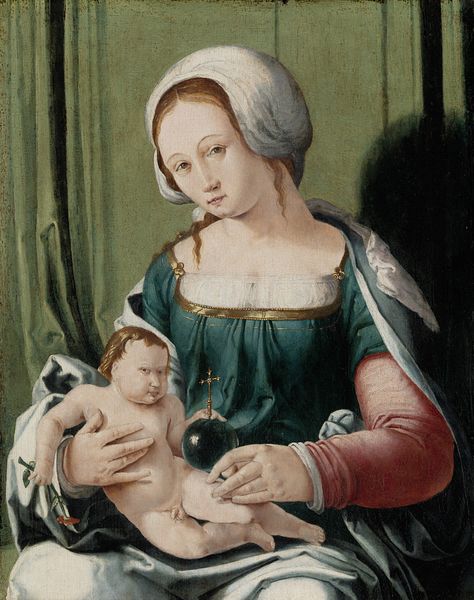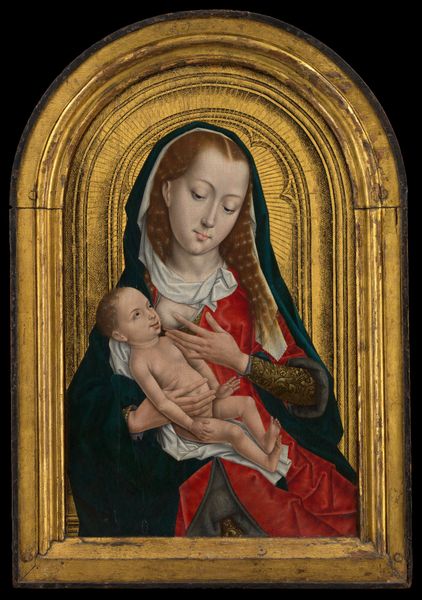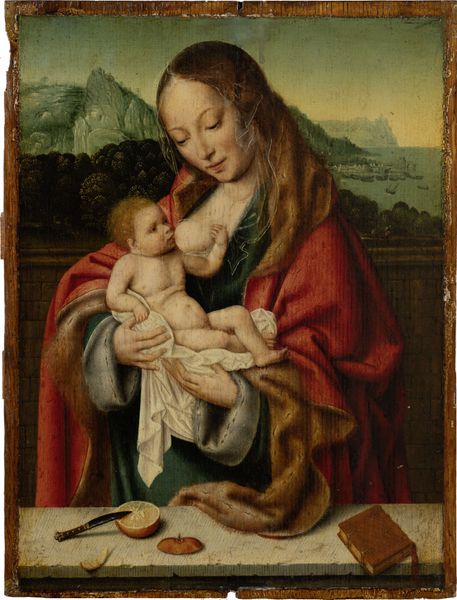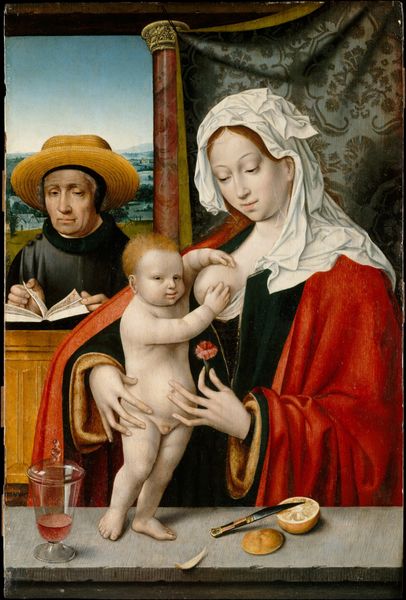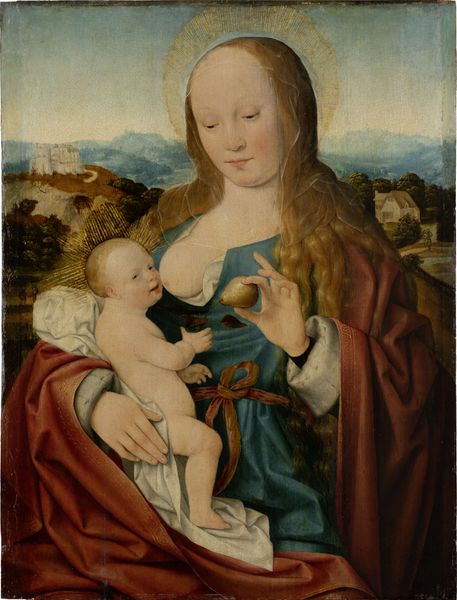
oil-paint
#
portrait
#
oil-paint
#
figuration
#
oil painting
#
history-painting
#
italian-renaissance
#
virgin-mary
Dimensions: 16 3/4 x 12 1/2 in. (42.5 x 31.8 cm)
Copyright: Public Domain
Curator: Take a moment to regard "The Holy Family" by Joos van Cleve, painted circa 1512-1513. It's currently housed here at the Metropolitan Museum of Art. Editor: Well, it’s certainly intimate! There's something almost unsettling about the directness of Mary breastfeeding the infant Jesus while Anne watches on, that feels like very private labour being laid bare. Curator: Exactly, and that is precisely where van Cleve situates this piece— the labour! The oil paint, layered meticulously on the panel, demonstrates incredible attention to detail, reflecting the patronage of wealthy merchant class interested in hyperrealistic and expensive material details. Consider the folds in the fabric, or the texture of the fruit. Editor: And speaking of materiality, the symbolism embedded within those material elements can't be ignored. We see the holy figures framed with carefully placed objects. What is the purpose behind what looks like a half-eaten feast displayed so prominently in the foreground? Is this just part of setting the scene for a typical middle class life or does the feast itself become part of the story of the Holy Family? Curator: A bit of both, really. The inclusion of ripe fruits certainly speaks to themes of abundance and divine provision. Moreover, these everyday details speak to the rising merchant class within Europe at this time, reflecting the growing market for such artwork amongst families looking to express wealth. The presentation isn't merely decorative; it contextualizes the family as simultaneously holy, and, perhaps aspirationally, of elevated status here on earth. Editor: I agree. Knowing it was likely commissioned by wealthy patrons sheds light on the composition. The placement of the figures, the precise detail of Mary's clothing, and even the window and shelves feel very consciously arranged to project status and religious virtue simultaneously. The politics of display is powerful, indeed. Curator: Right! This particular Italian Renaissance style of rendering was certainly valued and reflects how even sacred stories are caught up in cycles of value and cultural capital. Editor: Seeing "The Holy Family" through this lens deepens my appreciation. I can see more how its beauty and craft represent social currents as well as devotional sentiment. Curator: It brings new awareness of how artistic skill and tangible materials communicate specific messages about society, class, and values. I, for one, am struck again by how closely knit it all is.
Comments
No comments
Be the first to comment and join the conversation on the ultimate creative platform.

